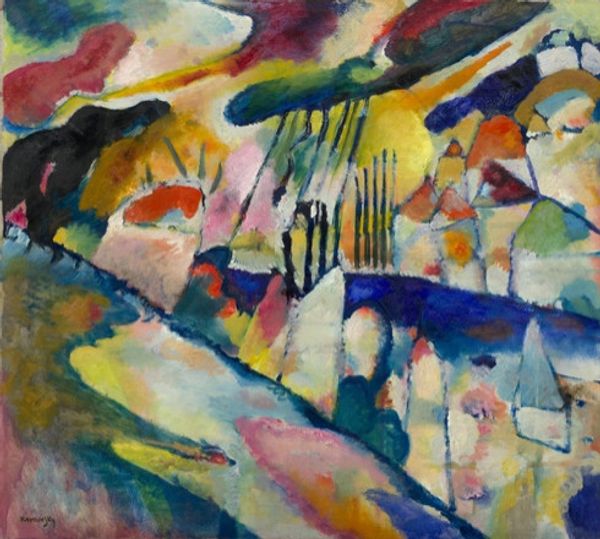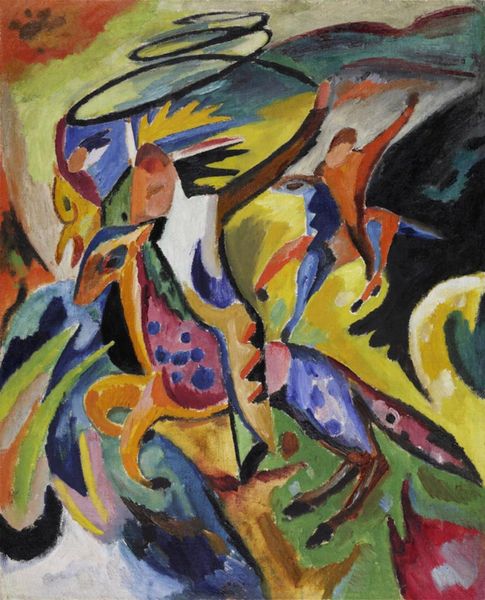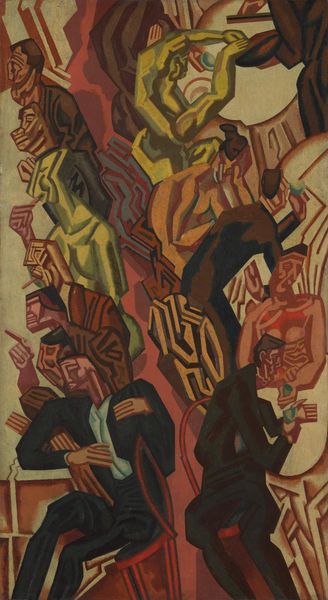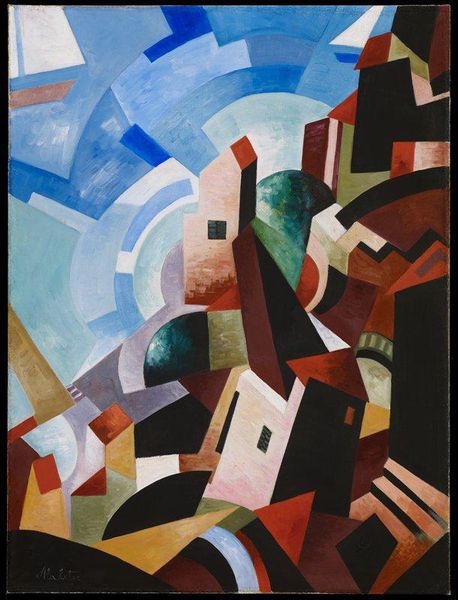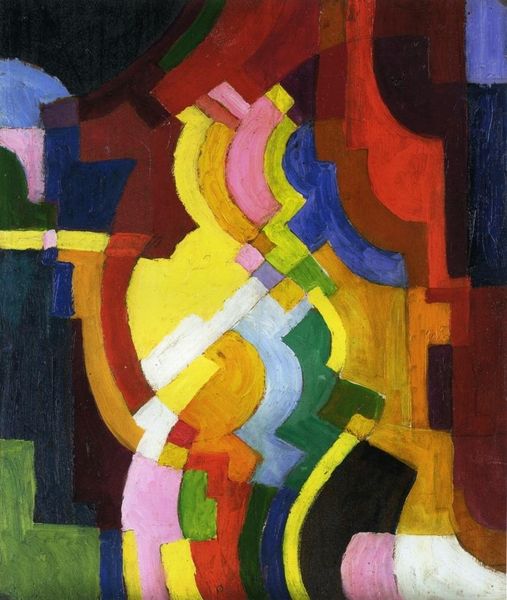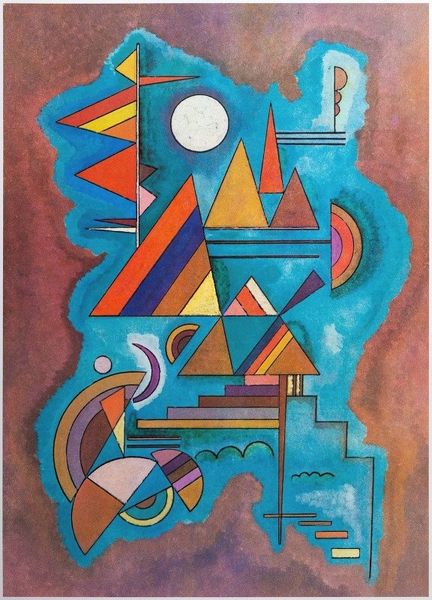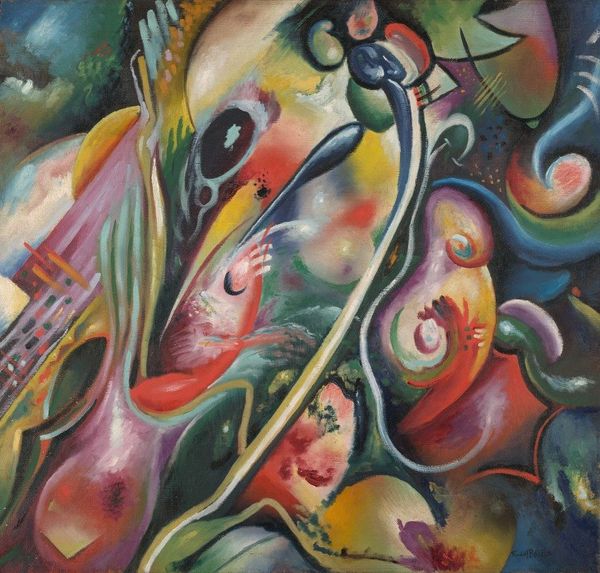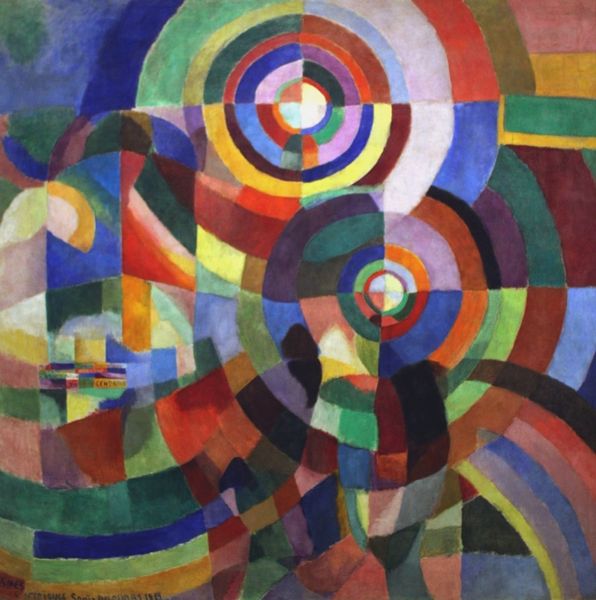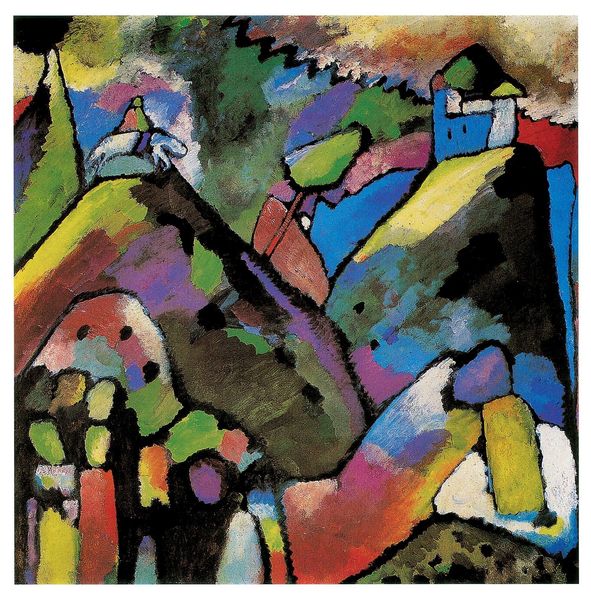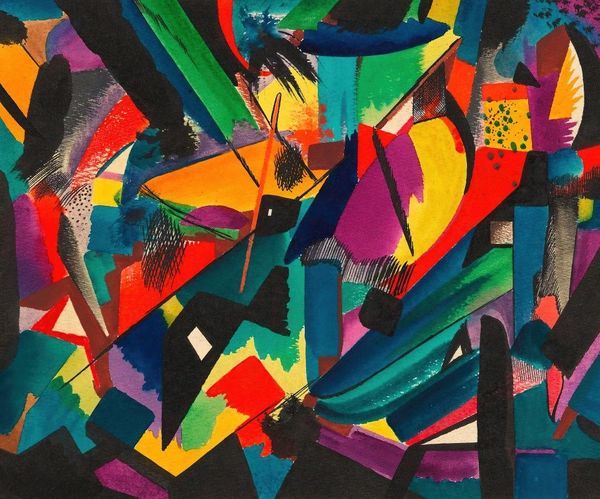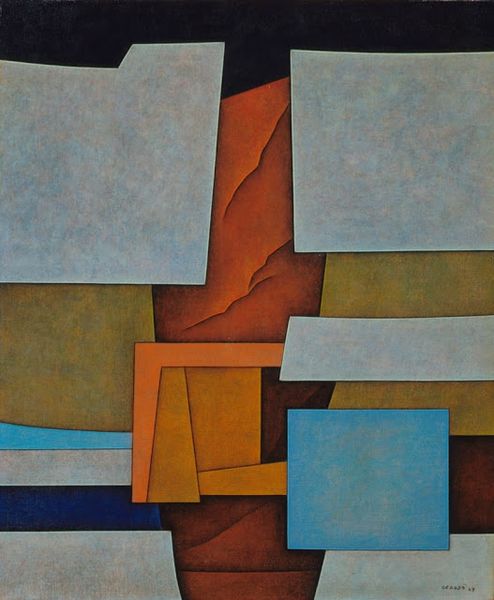
Dimensions: 102 x 82 cm
Copyright: Public domain
Editor: August Macke's "Colored Composition (Homage to Johann Sebastian Bach)," painted in 1912 using oil paint, strikes me as both playful and strangely structured. What do you see in this piece? Curator: This painting, on one level, represents an early 20th-century impulse to synesthesia – the merging of senses. It’s not just about abstracting form, but also about visualizing music, about understanding music theory and seeing how these abstract structures can suggest emotions or even societal critiques. How might Macke's homage challenge the established aesthetic order? Editor: I guess it’s pretty radical to connect Bach with abstraction… to visualize music in a totally new way. So it is trying to disrupt traditional ideas about music as being confined to the rules that define it, but being freer? Curator: Exactly. Macke's color choices, aren’t they reminiscent of Fauvism? But think about the political implications; challenging formal artistic traditions can also become a challenge to political and cultural institutions. In what ways might Macke, through color and form, express the rapidly changing world he inhabited? Editor: I see the bright colors as expressive, kind of like rejecting older more rigid ideas. And I am also noticing geometric shapes and structures in this artwork, like those were actual tools in dismantling what came before in terms of musical visualization or Fauvism! Curator: Precisely. By breaking down visual forms, he echoes the composers deconstructing classical harmonies. Seeing that connection allows a powerful statement about innovation and the questioning of norms. It is exciting to see art reflecting change through different media like painting and music. Editor: I see now how understanding the context—the social upheaval, the new art and music, is vital for really seeing the art. Curator: Absolutely, context enables a deeper appreciation! We move beyond just visual enjoyment toward something much more transformative and representative of the artist's world.
Comments
No comments
Be the first to comment and join the conversation on the ultimate creative platform.
